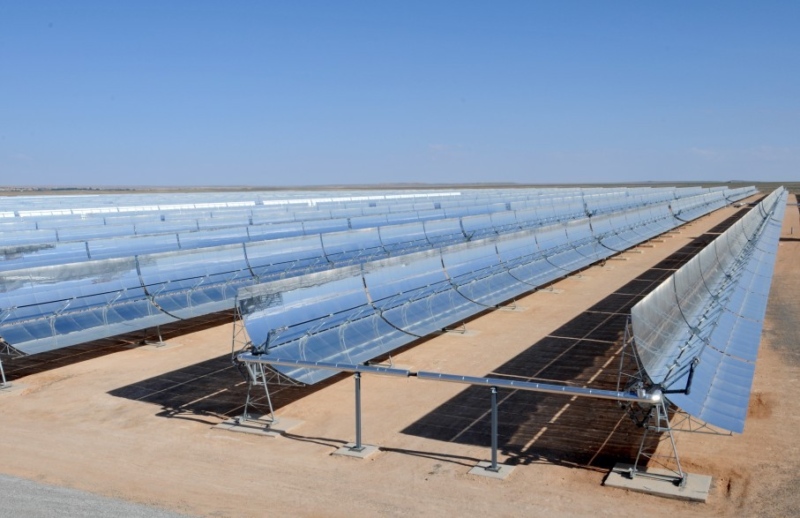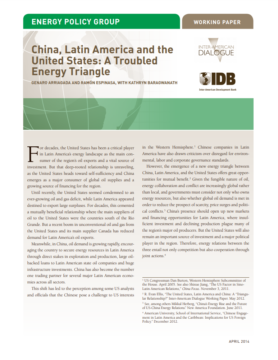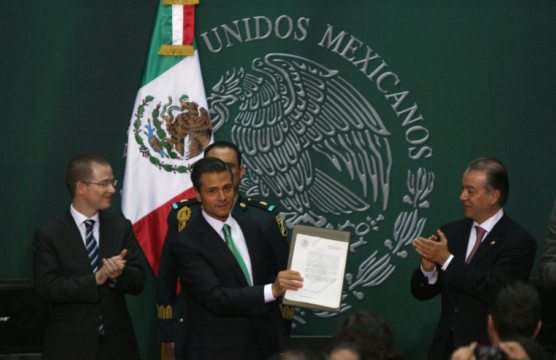
Navigating Risk in Brazil’s Energy Sector
Brazil’s oil and gas and electricity sectors are an important destination for Chinese direct investment.
Q: Latin America and the Caribbean installed 625 megawatts of solar photovoltaics in 2014, a 370 percent growth rate over 2013, with Chile accounting for more than three-quarters of the regional total, according to a recent study by GTM Research. Will solar continue its growth momentum this year, and which countries will stand out? How are big swings in prices for other sources of power such as natural gas affecting the outlook for PV in the region? How are recent energy policy changes in Brazil, Mexico and elsewhere shaping the outlook for solar development in the medium to longer term?
A: Rolando González Bunster, CEO of Interenergy Holdings: "Solar development is directly tied to the cost of energy in the host country. As the prices of oil and gas have dropped significantly, so has the price of energy, and therefore it makes solar and other renewables less compelling. Solar, given its yield characteristics, relatively high cost of installation and land cost, needs a minimum of $0.10 per kilowatt-hour to earn an 8 percent return. Today, medium-speed diesel engines running on heavy fuel oil produce energy at that price."
A: Lisa Viscidi, director of the Energy, Climate Change and Extractive Industries Program at the Inter-American Dialogue: "Growing electricity demand and a steep decline in the costs of photovoltaic (PV) modules are increasing the allure of solar power across Latin America. The price of PV modules has plummeted by 75 percent since 2009. As a result, the global average levelized cost of electricity--which calculates the costs over a project's life cycle--for utility-scale solar PV was cut in half between 2010 and 2014. In Latin America, relatively high electricity tariffs make solar even more competitive with fossil fuels. But with the price of PV modules expected to level out, policymakers will need to reduce structural 'soft costs' to maintain the solar boom. Unlike in Europe and Asia, Latin American countries do not offer feed-in tariffs or large subsidies. Some countries do permit net-metering and self-supply schemes, allowing consumers to generate power and sell it back to the grid. Such policies have helped boost the PV industry, but their impact remains limited. Chile is the only Latin American country where solar costs have reached grid parity, thanks to its high solar irradiation, deregulated electricity sector with U.S. dollar-denominated contracts and high wholesale electricity prices. Strong energy demand from the mining sector and Chile's investment grade credit rating have also boosted the industry. Indeed, Chile may become the next emerging market to reach 1 gigawatt of installed PV capacity. The biggest risk to growth is that mining companies avoid signing long-term solar power-purchase agreements because of commodity market volatility. In Brazil, solar's appeal has grown amid a severe drought that reduced supplies from hydroelectric dams. In October, Brazil held its first federal solar-only auction, where contracts were awarded with tariffs of $89/MWh--among the lowest in the world. Policymakers, concerned about power shortages, are considering cutting taxes and improving financing conditions to spur PV expansion. Mexico, in contrast, is more focused on natural gas from domestic production and U.S. imports. Although Mexico's energy reform includes some incentives for renewables, it will have a greater impact on the conversion of oil-fired power plants to natural gas."
A: Jorge Kamine, Aryan Moniri and Leah Chacon, attorneys at Skadden Arps: "While there may be some adverse impact from the recent drop in global oil prices and any prolonged economic slowdown, we expect to see continued growth in the deployment of solar in Latin America and the Caribbean (LAC). Several factors should contribute to that growth, including the need to address the continued increase in electricity demand in LAC in order to support economic development, high electricity prices in some areas that make solar competitive without subsidies, the increased adoption of various government policies intended to encourage renewable energy development and the accumulated experience of a couple of years of developing and financing solar projects in LAC. The limited opportunities for developing new solar projects in Europe and the United States has also encouraged an ever-expanding roster of international and local solar companies developing and investing in projects in LAC, including the increasing number of U.S.-based renewable 'yieldcos,' which all need to grow their portfolios in the face of a shrinking supply of U.S. and Canadian projects. We expect the greatest growth in countries that have already successfully developed and financed projects and where developers can most easily and quickly obtain long-term, third-party debt financing and equity investment on favorable terms, which often turns on developers' ability to secure agreements with creditworthy counterparties that lock in a minimum electricity price and where the legal, regulatory and policy environment is clear, predictable and stable enough to ensure the enforcement of the rights of the lenders and owners."
A: Camila Ramos, managing director of Clean Energy Latin America (CELA) in São Paulo: "Despite strong growth in PV installations in Latin America in 2014, and Brazil being ranked third in the region, only 21 MW were installed in the country last year. Nonetheless, Brazil conducted its first federal solar PV auction in October, when more than 1 GW of projects were contracted, signing 20-year PPAs with Brazilian utilities and backed by the Brazilian government. These projects, most of them developed by foreign players experienced in PV elsewhere, must start operations by October 2017. The Brazilian Development Bank announced its first financing line for these projects--the most competitive rates in the market. To keep the momentum, the government is studying two further PV auctions for 2015--one in the first half and another in the second half of 2015, in line with local PV industry demands for 1 GW of PV auctions per year in the country. For comparison, Brazil contracts more than 2 GW of wind projects every year. And the emergence of large-scale PV projects and the industry that comes with it should spark the growth of distributed PV projects in the country in 2015. The context of record droughts in hydroelectricity-dependent Brazil--which are expected to continue throughout 2015--recent blackouts and water rationing, as well as a 40 percent increase in the price of electricity in the energy-hungry country, is proving to local regulators and consumers that PV presents an interesting part of the solution, as well as a path toward a clean, diversified, competitive and abundant energy matrix for sunny Brazil."
A: Thomas Koerner, general manager of Canadian Solar's Americas division: "Latin America's solar market outlook in 2015, especially for module manufacturers, remains robust throughout the entire region--including the Caribbean, Central America and South America. My assessment is derived from Canadian Solar's successful expansion in the Latin American residential segment in the last quarter of 2014, including the 146 megawatts we won in Honduras and the 114 MW we won in Brazil. Therefore, I believe that solar will experience positive growth in Latin America in 2015. Nevertheless, questions do remain--for example, the economic competitiveness of solar remains an ongoing challenge, especially when comparing it with other renewable energy alternatives, such as hydro and wind. The good news is that this challenge is not a persistent difficulty. I am hopeful that consistent product innovation from leading solar module manufacturers ensures that ever-evolving technologies will adapt to political and economic conditions in the region. Latin American solar PV may have been a niche market in 2014, but the region's access to natural sunlight and growing infrastructure serve as good opportunities to give the area's residents access to a cleaner, more economical source of natural electricity in 2015."
Brazil’s oil and gas and electricity sectors are an important destination for Chinese direct investment.
The US’ standing as the main consumer of Latin America’s oil exports is unraveling as China emerges as a major consumer of global oil supplies.
The results of Mexico’s energy reforms may fall well short of government promises and public expectations.
 World Bank / CC BY-NC-ND 2.0
World Bank / CC BY-NC-ND 2.0

 Video
Video